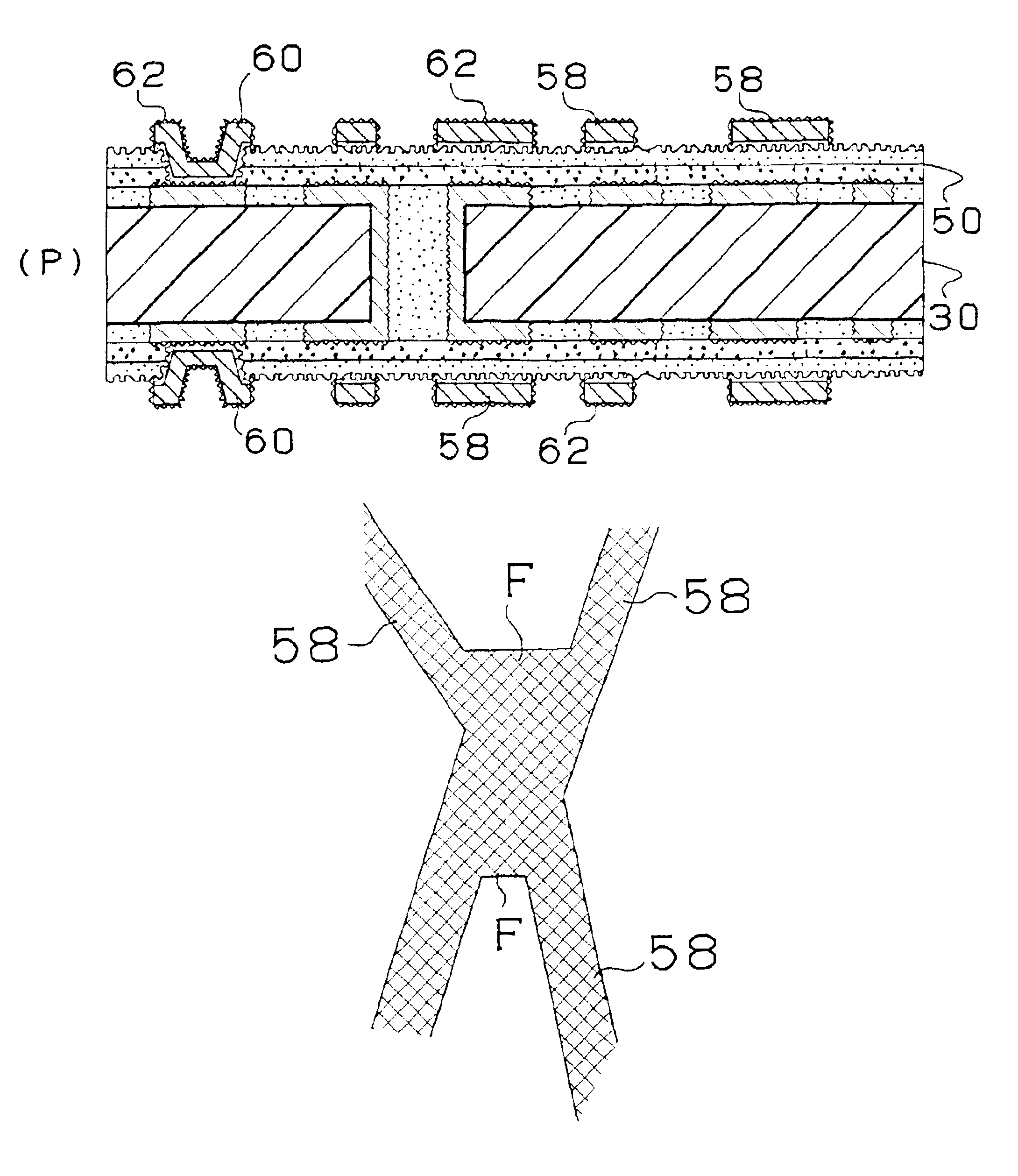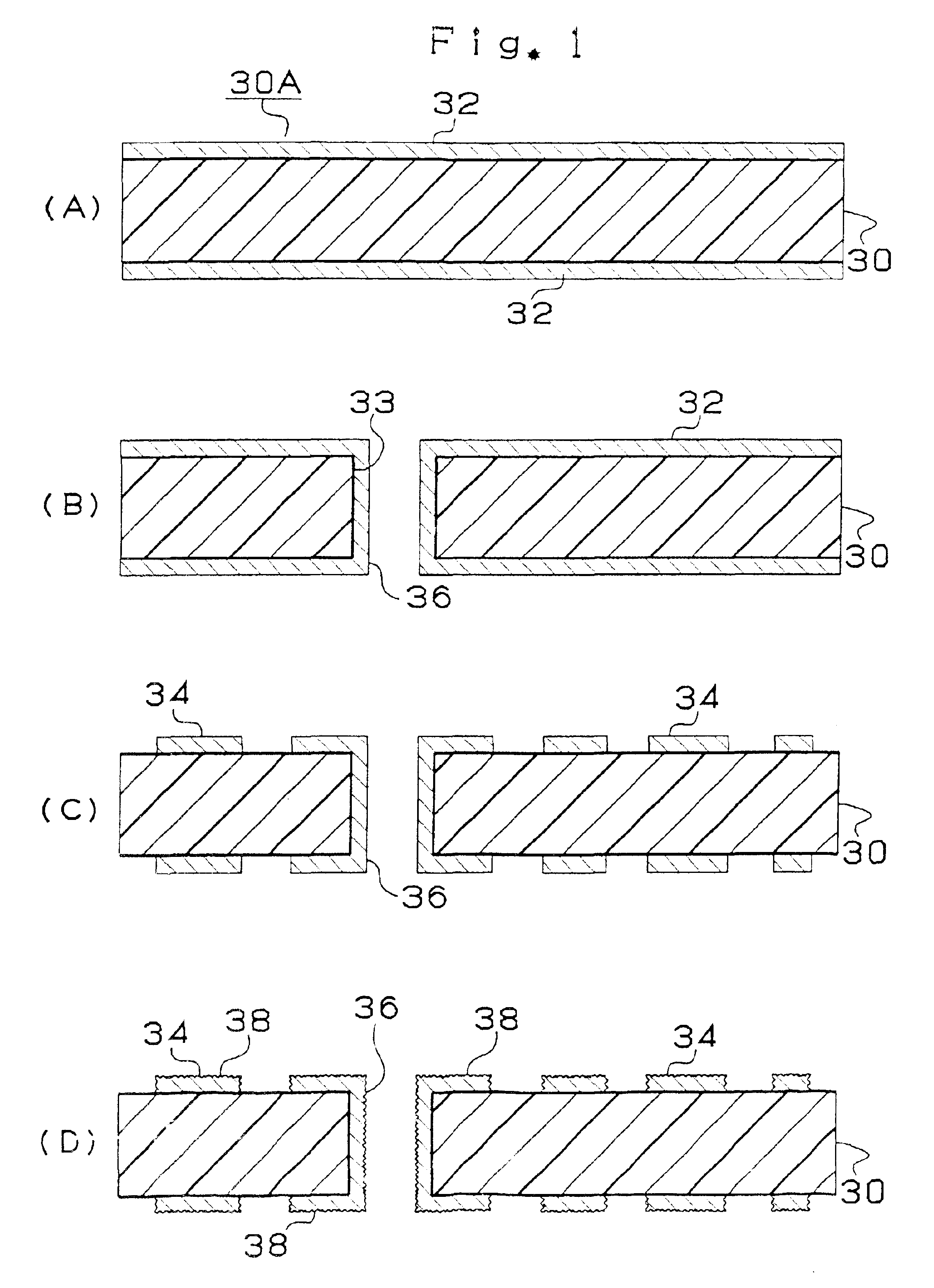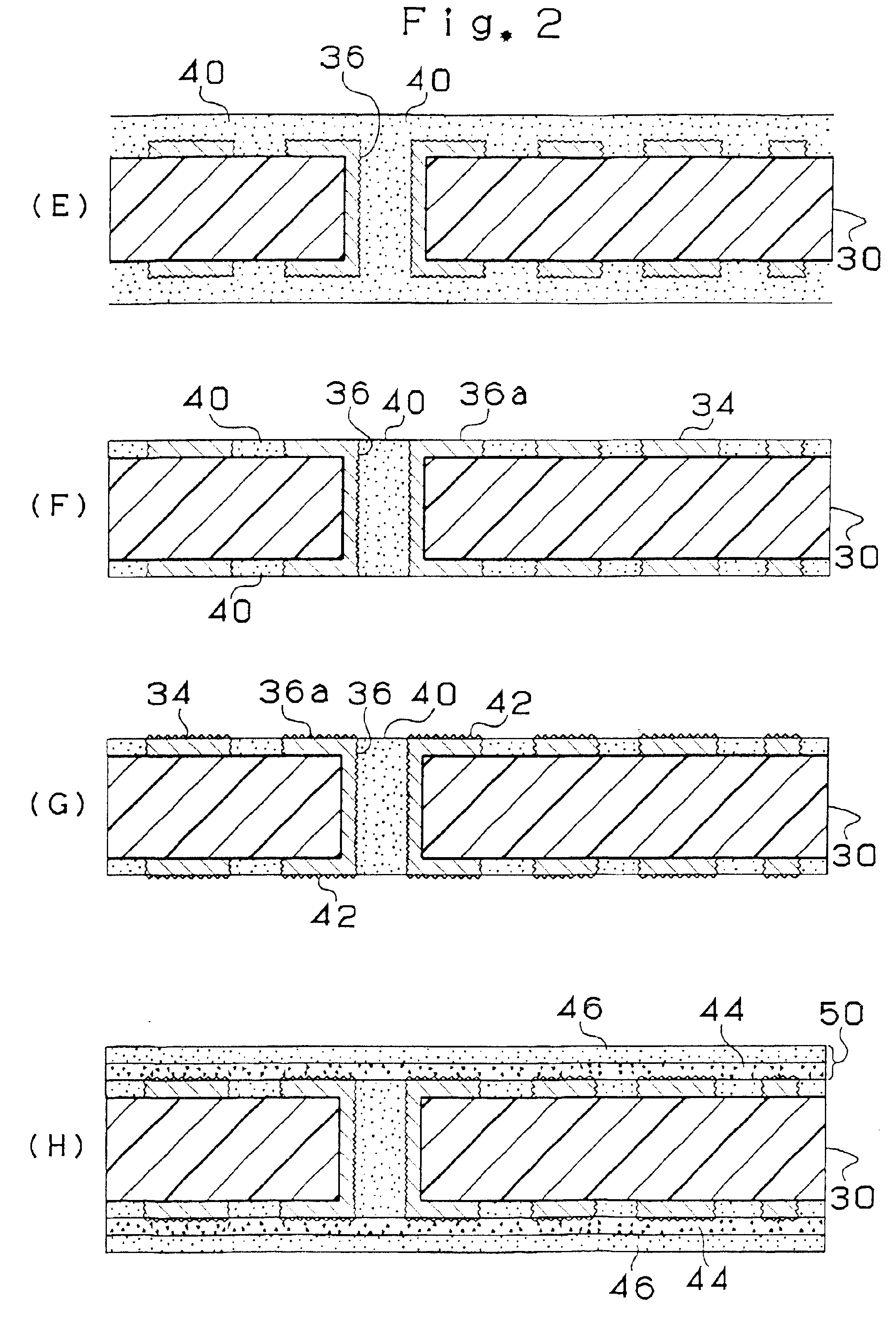Method of fabricating crossing wiring pattern on a printed circuit board
a printed circuit board and cross-wiring technology, applied in the direction of transportation and packaging, non-printed electrical components of printed circuits, metal adhesion improvement of insulating substrates, etc., can solve the problems of exponentially complex manufacturing process, short-circuit wiring, etc., and achieve the effect of improving resolution
- Summary
- Abstract
- Description
- Claims
- Application Information
AI Technical Summary
Benefits of technology
Problems solved by technology
Method used
Image
Examples
first embodiment
[0095]Here, the explanation is made with respect to compositions of A. an adhesive for electroless plating, B. an interlayer resin insulating agent, and C. a resin filling agent used in the manufacturing method of the multilayer printed wiring board in accordance with the
A. Raw Material Composition Substance for Adjusting and Manufacturing an Adhesive for Electroless Plating (an Adhesive for an Upper Layer)
[0096][Resin Composition Substance ①]
[0097]A resin composition substance is obtained by stirring and mixing 35 weight parts of a resin liquid, 3.15 weight parts of a photosensitive monomer (manufactured by TO-A GOSEI, Alonix M315), 0.5 weight part of an antifoaming agent (manufactured by SAN-NOPUKO, S-65) and 3.6 weight parts of NMP. In the resin liquid, 25% of a cresol novolak type epoxy resin (manufactured by NIHON KAYAKU, molecular weight 2500) and 80 wt % of an acrylic substance in concentration are dissolved to DMDG.
[0098][Resin Composition Substance ②]
[0099]A resin compositi...
second embodiment
[0167]A multilayer build-up wiring board in accordance with the present invention will next be explained with reference to the drawings.
[0168]FIG. 13 shows a section of the multilayer build-up wiring board in accordance with the second embodiment of the present invention. Build-up wiring layers 90A, 90B are formed on front and rear faces of a multilayer core substrate 30. The build-up layers 90A, 90B are constructed by interlayer resin insulating layers 50 and 150. A via hole 60, a via hole land 61 and a wiring pattern 58 are formed in the interlayer resin insulating layer 50. A via hole 160, a land 161 and an unillustrated wiring pattern are formed in the interlayer resin insulating layer 150. The via hole 160 in an upper layer is connected to the via hole land 61.
[0169]A soldering bump 76U for connection to an unillustrated bump of an IC chip is formed on a front (upper face) side of the printed wiring board. A soldering bump 76D for connection to an unillustrated bump of a mother...
third embodiment
[0179]A printed wiring board and its manufacturing method in accordance with the present invention will next be explained with reference to the drawings.
[0180]First, the construction of the printed wiring board 10 in accordance with the third embodiment of the present invention will be explained with reference to FIGS. 17 and 18. FIG. 17 shows a state in which an IC chip 90 is mounted to the multilayer printed wiring board 10 and is attached to a daughter board 94.
[0181]As shown in FIG. 17, a through hole 36 is formed within a core substrate 30 in the printed wiring board 10, and a conductor circuit 34 is formed on each of both faces of the core substrate 30. A lower layer side interlayer resin insulating layer 50 is formed on the core substrate 30. A conductor layer constructed by a via hole 60, a wiring pattern 58S, a land 58R and a dummy conductor 58D is formed in the lower layer side interlayer resin insulating layer 50. An upper layer interlayer resin insulating layer 150 is ar...
PUM
| Property | Measurement | Unit |
|---|---|---|
| angle | aaaaa | aaaaa |
| angles | aaaaa | aaaaa |
| width | aaaaa | aaaaa |
Abstract
Description
Claims
Application Information
 Login to View More
Login to View More - R&D
- Intellectual Property
- Life Sciences
- Materials
- Tech Scout
- Unparalleled Data Quality
- Higher Quality Content
- 60% Fewer Hallucinations
Browse by: Latest US Patents, China's latest patents, Technical Efficacy Thesaurus, Application Domain, Technology Topic, Popular Technical Reports.
© 2025 PatSnap. All rights reserved.Legal|Privacy policy|Modern Slavery Act Transparency Statement|Sitemap|About US| Contact US: help@patsnap.com



